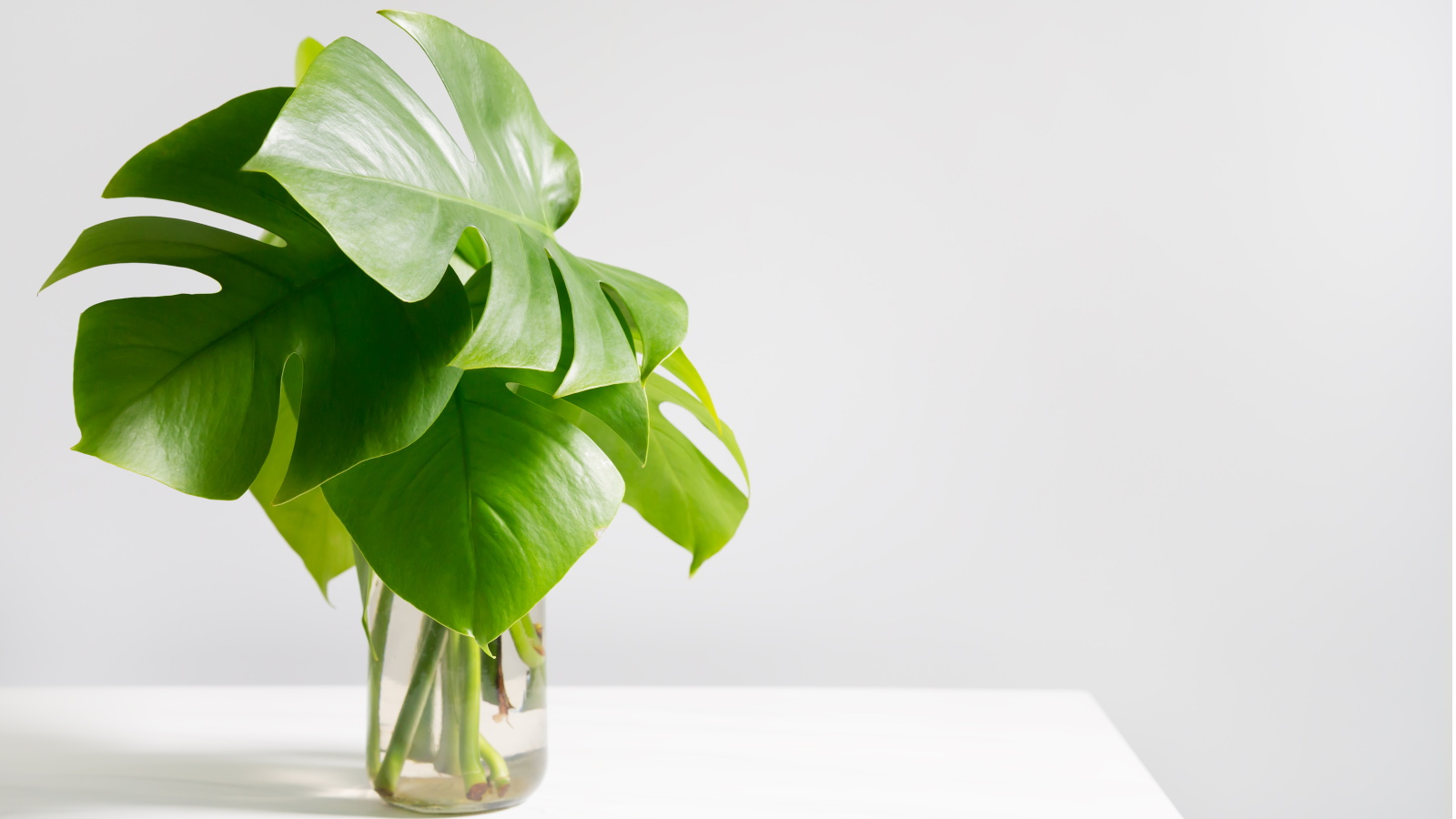
There are so many benefits to hydroponic gardening: it conserves resources, is perfect for indoor gardeners, and it's a beautiful way to display plants. That's why I was excited to learn you can grow a monstera in water, as I'm always on the hunt for new ways to elevate my houseplant display.
Once you master monstera care, it's easy to grow them hydroponically. It's a common way to propagate monsteras, but keeping them in water long-term is also fairly straightforward, so long as you avoid common hydroponic gardening mistakes.
There are just a few simple steps you need to follow to grow monsteras in water and a few things to keep on top of to keep them happy and healthy when growing in water. I've compiled everything you need to know right here.

How to grow a monstera in water
If you're wondering how a monstera can get all the essential plant nutrients for growth without soil, the answer lies in their aerial roots. Like other epiphytic plants (those that grow on the bark of trees and other plants, rather than in soil), monsteras largely rely on water and air for nutrients in their natural habitat. This means you can grow a monstera in water permanently quite successfully. Here are five easy steps to follow:
1. Take a monstera cutting

Just like any of the easiest houseplants to grow from cuttings, you need to ensure you take a monstera cutting correctly for both propagating a monstera and for hydroponic growing to work well.
When taking a monstera cutting, you need to be equipped with the essential pruning tools - like these bypass pruning shears from Amazon.
You can then choose a stem with three or four leaves on it and take a cutting just below a leaf node. This is where the cutting will root in water. Make sure not to damage any aerial roots in the process.
2. Choose the right vessel for your monstera

There are plenty of pros and cons of hydroponic gardening, and one thing you need to get right is having a big enough vessel for your plant.
Monsteras come in all sizes, from the smaller Monstera adansonii to the large Monstera deliciosa. While it's true hydroponic monsteras are unlikely to reach their full potential height when grown in water, you still need to choose a container that won't become too small for them too quickly.
You can use a propagation station (like this one from Amazon) or simply a glass vase (like this one from Walmart). Whatever you choose, it's wise to opt for something transparent so you can observe the root growth and level of water.
3. Place the monstera cutting in water

This is the stage where you set your monstera up. It can be helpful to familiarize yourself with common water propagation mistakes, as many of them are relevant to hydroponic gardening.
For example, you need to remove the bottom one or two leaves of your monstera before placing it in water. This is because submerged leaves are likely to rot.
'Submerge at least one node below the water level,' advises Chuck Pavlich, plant expert and director of new product development with Terra Nova Nurseries. 'Nodes are found at the growth ring on the stem,' he explains.
Something to note: aerial roots are not required to sit in the water and will benefit from access to air flow.
4. Place in a bright spot

With your monstera all set up in its new water home, you need to put some other things in place to ensure it has the best growing environment. This includes light.
'The same conditions it needs should be met whether in water or soil,' advises Lisa Eldred Steinkopf, houseplant expert at The Houseplant Guru. 'It will only do well with the right amount of light,' she says.
In fact, if you notice your monstera leaves turning yellow, it could be due to insufficient light levels.
In their native habitat, monsteras grow in tropical rainforests beneath canopies of trees. They are exposed to dappled sunlight.
To recreate this at home, place you monstera somewhere with bright light. Take care to keep it out of direct sunlight, however, as it could cause leaf scorch. You might want to use this sheer curtain from Wayfair to block out direct sunlight for your monstera and other houseplants.
5. Regularly change out the water

If you want to keep your monstera in a healthy condition, don't leave it in the same water forever.
'Water should be changed frequently,' advises Chuck. This will ensure the monstera is growing in a clean environment and helps to remove any dirt or bacteria from your plant's water.
Failing to do so will result in the water levels depleting, as well as leaving your monstera susceptible to disease and common houseplant pests.
FAQs
How do you fertilize a hydroponic monstera?
Even if you grow a monstera in water, it's important to fertilize your monstera. It's best to use a water soluble monstera fertilizer (like this one from Amazon) and apply it when you change your monstera's water. Make sure to follow manufacturer instructions regarding how much to use and reduce fertilizing in winter when your monstera isn't actively growing.
To maintain the appearance of your monstera, don't forget to also clean your houseplant leaves. You also shouldn't need to upgrade your monstera's vase or vessel too quickly, as monsteras like being root-bound for some time.







